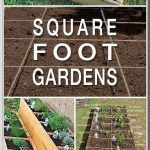Gardening is something you can do year-round. Prepare in January and February so that when March comes you are able to begin planting.
to have a look at gardening equipment like leaf blowers, so you can ensure you’re tooled up for the seasons.

Gardening in January– February
- Order seeds and garden supplies.
- Prepare lights and tools for starting seeds.
- Clean and keep garden tools
Gardening in March
- Frost seed white dutch clover in backyard and garden courses where weeds are under control.
- Finish pruning fruit trees. When buds start to swell, fertilize.
- Second week: Start inside: onions, broccoli, cabbage, kale, collards, kohlrabi, parsley, lettuce, celery root.
- Plant outdoors as quickly as soil is workable and reaches 40 degrees; mustard, chard, onion sets, kohlrabi, radish, arugula, peas, fennel, parsley, parsnips, leeks, raddichio, beets, kale, rhubarb, asparagus, shallots, spinach.
- Third week: start peppers and eggplant inside your home.
- Plant carrot, chard, and beet seeds in garden.
Gardening in April
- Plant fruit trees.
- Mulch garden paths
- Turn in cover crops or top gown beds with compost.
- If weather condition is dry, begin watering.
- Week: begin tomatoes indoors
- 2nd week: transplant onions, leeks, plant potatoes, Jerusalem artichokes.
- Third week: transplant brassicas, lettuce, chickory, plant strawberries.
Gardening in May
- Week: plant warm season crops like beans, corn, summer squash, spinach.
- 2nd week: (watch weather condition forecast) transplant tomatoes, eggplant, peppers, hill potatoes.
- Third week: mulch potatoes, plant winter season squash, transplant sweet potatoes. Plant corn last.
Gardening in June
- First week: prune tomatoes, mulch tomatoes, peppers, eggplant. Set up trellis or cages and begin training plants to support. Make sure your support can hold the weight of mature plants.
- Second week: start fall plantings. Plant carrots now through early July for fall harvest.
- Fourth week. Plant fall turnips, radish, choi.
Gardening in July
- 2nd week: plant last cucumber, summer squash, storage beets, transplant broccoli, cabbage, collards, cauliflower.
- Third week: plant spinach, arugula, rutabaga
- Fourth week: last planting of carrots, beets, chard, beans, basil.
- Pull onions.
Gardening in August
- Till beds for garlic and overwintered spinach.
- 3rd week: Last planting of lettuce, arugula, choi, turnip, radish. Plant cover crops on unused areas of garden.
- 4th week: Plant cold hardy crops now through late September for season extension under low tunnels.
Gardening in September
- Third week: plant overwintered spinach, harvest sweet potatoes before soil temperature levels drop below 60 degrees.
Gardening in October
- Second week: harvest winter season squash, harvest fall roots before temperature levels drop listed below mid-twenties. Japanese turnips are most conscious cold damage. You can hill them to postpone harvest.
- Fourth week: plant garlic, dig last potatoes.
Gardening in November
- Week: plant garlic, dig last potatoes. Mulch carrots, parsnips, burdock, etc. that will be left in the ground over winter season.
- 3rd week: mulch garlic after ground freezes.
Article source: http://blog.naturessunshine.com/gardening-year-long/



